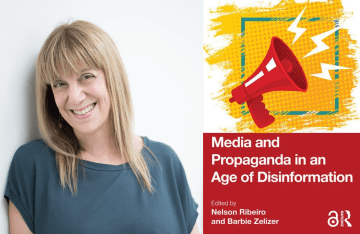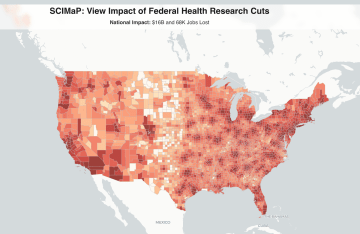When Social Movements Reach Their Tipping Point, and Why Scientific Collaboration is Important
Collective effervescence shows how the actions of a few activists online can bubble up, spread, and shape history.

Photo Credit: Teemu Paananen / Unsplash
The paper’s title sounds intimidating: “The Dynamic of Information-Driven Coordination Phenomena: A Transfer-Entropy Analysis.” Six of the seven authors are physicists, after all.
But the seventh author, Annenberg School for Communication Assistant Professor Sandra González-Bailón, would implore you to see beyond the complex math. Not only is the paper an important breakthrough to understand how grassroots social movements reach their tipping point, she says, but it’s the perfect example of why interdisciplinary collaboration is vital to driving science forward.
The paper, newly published in the journal Science Advances, looks at events caused by “collective effervescence.”
Unlike top-down actions like a corporate announcement or a governmental decree that then have rippling effects on the public, events of collective effervescence start small — a tight circle of activists, a maverick trendsetter — and grow organically until they suddenly seem to explode. Protesters pour into the streets. Rumors become national headlines. Americans under 25 suddenly all wear high-waisted jeans.
Finding a way to identify that tipping point where a movement explodes was one of the aims of the study.
In much the same way seismologists monitor tremors to anticipate earthquakes, these seven researchers combed through Twitter data to answer a big question: Can we anticipate these massive events of collective attention just by looking at communication patterns?
The methodology they build from, symbolic transfer entropy, has its roots in brain science, where it is used to determine which parts of the brain are driving activity in other parts. In this study, the methodology has been adapted to determine who in a social network is leading and who is following.
To validate the model, they looked at five social events: the release of a Hollywood movie, massive political protests in Spain and Brazil, rumors leading up to the discovery of the Higgs boson, and the acquisition of Motorola by Google.

In the case of social movements, the researchers observed that time is an important variable, and it not a constant. The temporal scale for these collective phenomena is actually elastic, getting smaller as the level of internal coordination goes up.
“As you approach the day when the collective event explodes massively, the rhythm of communication accelerates so fast that if you want to understand what’s going on, you need to zoom in,” says González-Bailón, who directs the Digital Media, Networks, and Political Communication (DiMeNet) research group at Annenberg. “You need to adjust the temporal scale and look at minutes or seconds as opposed to hours or days. But if you want to see what happens in the month prior and you were to look at seconds, you wouldn’t see anything. You need to zoom out.”
In developing a new methodology for analyzing and understanding the dynamics of collective action through social networks, the researchers have taken a first step that could lead to the formulation of predictive models to identify social tremors before the earthquake.
This work grew out of a 2011 study on the dynamics of protest recruitment published in Nature Scientific Reports by González-Bailón, Javier Borge-Holthoefer (IN3-Universitat Oberta de Catalunya), and Yamir Moreno (University of Zaragoza), who are also co-authors on the present study.
“We noticed back then specific diffusion patterns in protests where there were hotspots that start activity, and then everyone starts following, but it’s one thing to say ‘We think that’s happening’ and another thing to prove it,” says González-Bailón.
Over the five years that the researchers have been working on the problem, others joined them with additional expertise, ultimately becoming seven authors in three countries spanning two very different disciplines.
“This was an intellectual exchange I never would have had if I had stayed within my comfort zone, and it’s a good example of how I see scientific research operating in the future,” says González-Bailón. “It doesn’t make sense to be doing social media research as a solo person anymore. This is the level of work you can only produce when you collaborate.”
In addition to González-Bailón, Borge-Holthoefer, and Moreno, other authors on the study include Nicola Perra (University of Greenwich), Bruno Gonçalves (New York University), Alex Arenas (Universitat Rovira i Virgili), and Alessandro Vespignani (Notheastern University).



